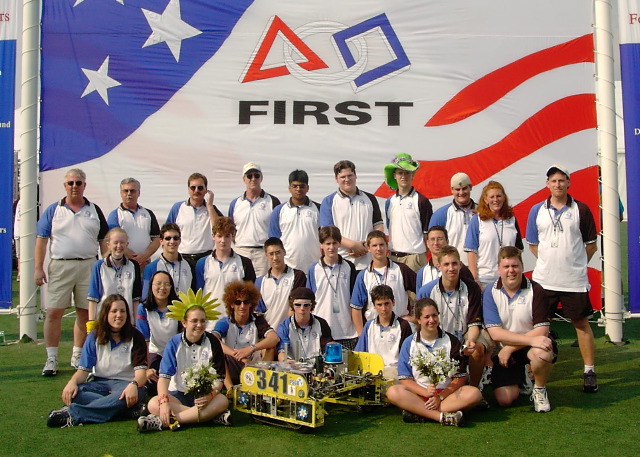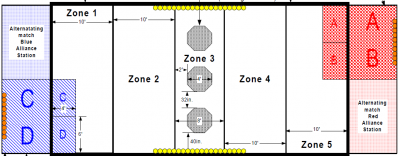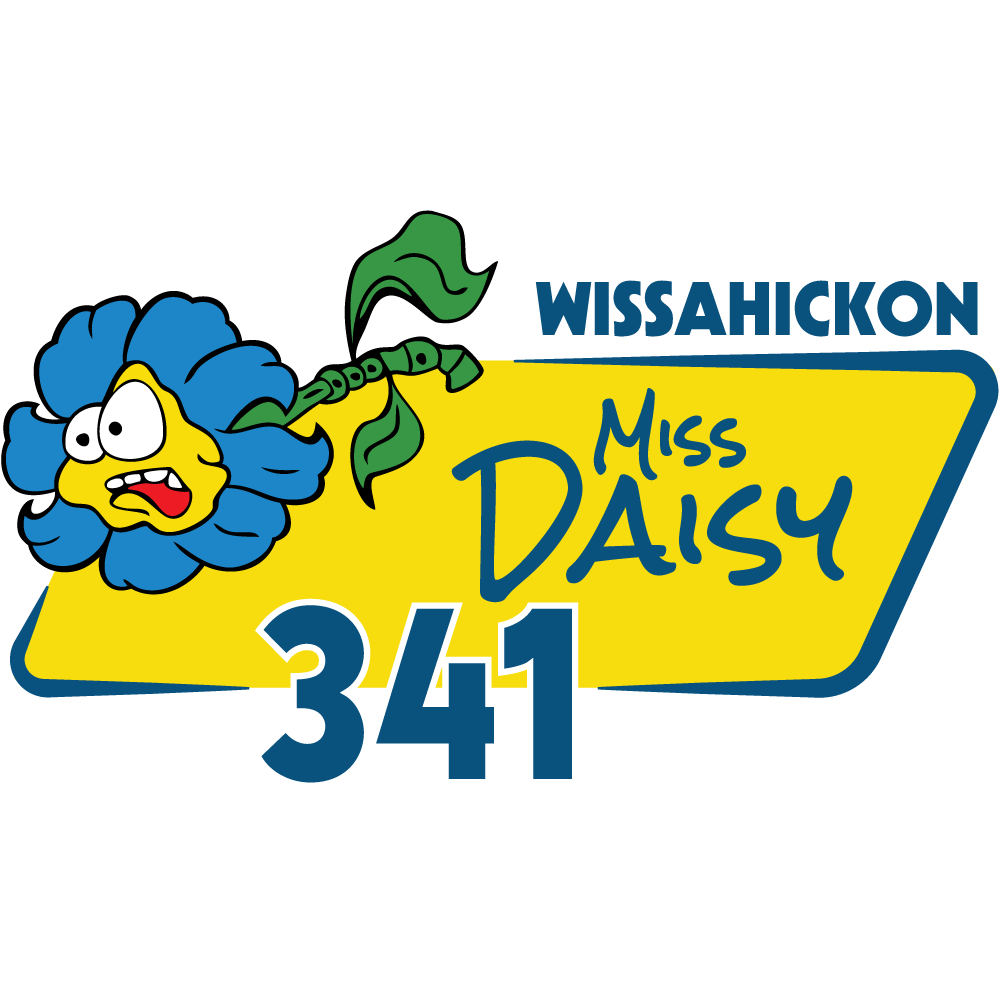2002: Zone Zeal
In 2002 the team decided to change its name yet again and form a more unique and memorable identity. After much debate, the team decided on “Miss Daisy” after the movie “Driving Miss Daisy.” The team figured that then they could say they were actually driving “Miss Daisy.” During the season, success started to take root, even though the team was not fully financially supported through sponsors. The team won three awards throughout the season, the Daimler-Chrysler Team Spirit Award at the Long Island Regional, and the Judge’s Award and Volunteer of the Year Award, both at the Philadelphia Alliance Regional. In the same season, one of Miss Daisy’s team members won a $40,000 scholarship to Drexel University, which was presented at the National Competition. Financially, it was a rough year, but Team 341 made it through the season better than they had previously.
- Philadelphia Regional Judge’s Award
- Philadelphia Regional FIRST Volunteer of the Year: Alan Ostrow
- Long Island Regional Daimler-Chrysler Team Spirit
- $40,000 Drexel Scholarship
- Pennsylvania Robot Challenge Finalist
- NASA/Maryland State Fair Competition First Runner-up
- Duel on the Delaware, Competition #1 Seed and Finalist
- Ramp Riot, Team Spirit Award, #8 Seed
- North Brunswick Eruption Robotics Champions

2002 Game Challenge, ZONE ZEAL™
The game is played on a carpeted, rectangular, 48′ x 12′ field divided into 5 zones. Zones 1, 2, 4, and 5 are each 10 feet wide. Zone 3, in the middle, is eight feet wide, and contains three 4-foot wide octagonal goals with wheels. Each 2-team alliance begins in one of the end zones (1 and 5). Outside zones 1 and 5 are the player stations, which each start with 10 orange soccer balls. Twenty yellow soccer balls lie centered on each side of the field.
The main point of the game is to score as many points as possible by filling the octagonal goals with soccer balls. Balls can be scored by robots or by human players in the player stations. However, balls and goals only count if they are in the alliance’s scoring area. The red alliance’s scoring area is zone 2, and the blue’s is zone 4. Ten points are awarded for each goal in the scoring area, and one point is awarded for each ball that is in that goal. Additionally, an alliance can gain 10 bonus points for each allied robot that finishes the match in its own home zone. (The red alliance’s home zone is zone 5, and the blue’s is zone 1.)
























